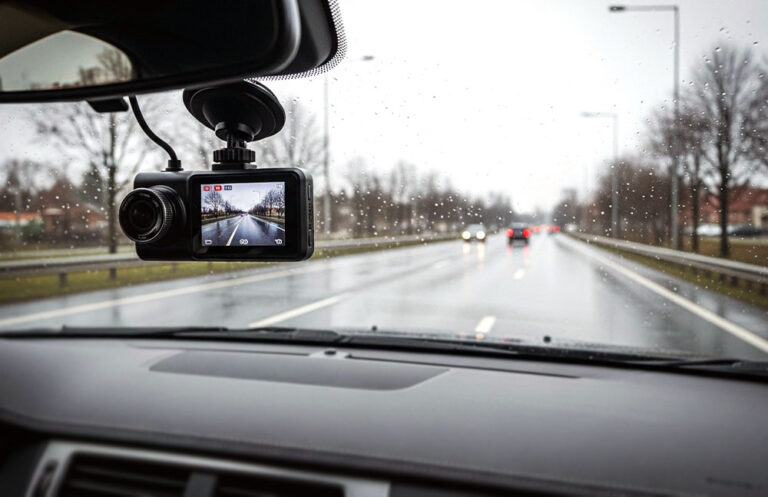As an Amazon Associate, I earn from qualifying purchases at no extra cost to you.
The Easy Way to Open Hood on Your Toyota Corolla (Expert Tips)
Have you ever parked your Toyota Corolla and realized you needed to check the engine but weren't sure how to open the hood? It happens more often than you think. I remember struggling the first time, feeling a bit lost and awkward. Some cars have tricky levers, and you might wonder if you're pulling the right one. In this article, we'll go through exactly how to open the hood on a Toyota Corolla, step by step.
Locate the hood release lever inside the car, usually near the driver's side. Pull the lever firmly. Walk to the front of the car and find the secondary safety latch under the hood. Slide the latch to release the hood completely. Lift the hood gently and support it with the prop rod if needed. Check if it's securely open before working. Always close the hood carefully, pressing down until it clicks.
Find the Hood Release Lever Inside the Car
The first thing to do is sit in the driver's seat and look around for the hood release lever. On most Toyota Corollas, it's located near the lower left side of the dashboard, close to the driver's door. Sometimes it can be hidden a little under the panel, so take a careful look. I remember the first time, I almost gave up thinking it might be under the steering wheel.
The lever usually has a small icon of a car with an open hood. Pulling it gently but firmly should give you a noticeable click. That click means the hood is partially released. You don't need to yank it hard, just steady pressure works best. If you don't hear the click, maybe the lever is stuck or your car needs a quick check.
Once you hear the click, the hood is not fully open yet. This is a safety feature so the hood won't pop up while driving. It's common to think the hood should just lift after pulling the lever, but it won't. This is why there's a second latch under the hood.
Take a moment to feel confident. Pulling the lever can be intimidating the first time, but it's a simple action. Once you get used to it, it becomes second nature. Keep practicing and soon you won't even think twice.
- Hood release lever is near the driver's side panel
- Look for a small car icon
- Pull firmly but gently
- Click indicates partial release
Walk to the Front and Locate the Safety Latch
After pulling the lever, you need to go to the front of your Corolla. Stand directly in front and slightly bend down to feel under the hood. You're looking for a small latch in the middle or slightly off-center. Sometimes it hides under the front edge, so your fingers might have to search a bit. I remember crouching like a detective, trying to find that little lever.
This safety latch is a crucial feature. It prevents the hood from flying up while you drive, even if you accidentally pulled the interior lever. Slide it to the side or lift it, depending on your model. The motion is simple, but some people hesitate, unsure if they're breaking something. Relax, it's built for this.
Once released, you can gently lift the hood. Make sure your hands are dry, and gloves can help if it's cold or your hands are sweaty. A smooth lift ensures nothing gets scratched. I've seen friends rush this step and almost hit the windshield—careful lifting avoids accidents.
Pay attention to the hood's alignment. If it feels stuck or uneven, don't force it. Double-check the latch, and try again with steady pressure. Safety first is always a good motto.
- Walk to front of car
- Feel for the safety latch under the hood
- Slide or lift the latch carefully
- Ensure the hood lifts smoothly
Lift the Hood Slowly and Check Support
Now that the safety latch is released, it's time to lift the hood. Use both hands, placing one near the front edge and the other supporting underneath. Lift slowly to avoid any sudden movement. I once lifted too quickly and almost bumped my head on the hood—it's easy to underestimate the weight.
Some Toyota Corollas have a hydraulic lift, but most models require a prop rod. Locate the rod on one side of the engine bay and hook it into the designated slot. This keeps the hood steady while you work. Trust me, it's much safer than trying to hold it with one hand while peering at the engine.
Double-check that the hood is securely propped. If it wobbles, adjust the rod or reposition your hands. Safety is more important than speed here. You don't want the hood to slam down while checking the oil or engine fluids.
Take a moment to notice how everything feels. A smooth lift, proper support, and stable hood give peace of mind. After a few times, you'll find it's an effortless routine. It's almost satisfying once you get it right.
- Lift hood slowly with both hands
- Use the prop rod if needed
- Ensure hood is stable
- Adjust if it feels wobbly
Check the Hood Mechanism for Smooth Operation
After opening, it's smart to check the release and latch mechanism. Make sure the lever inside moves smoothly, and the safety latch slides without sticking. I like to lightly lubricate the latch every few months with a small spray of WD-40. It keeps everything smooth and avoids any surprises.
Observe how the hood moves when lifted. It should rise evenly without catching on edges. If it feels uneven or stiff, gently inspect the hinges and rods. Sometimes dirt, rust, or minor debris can slow down the movement. Cleaning these areas is a small effort with a big payoff.
While you're at it, check the prop rod's slot. It should fit snugly and hold the hood firmly. A loose rod can be risky. I've seen people forget this step and the hood wobbled while working—best to prevent that.
Finally, practice a smooth close and open cycle once in a while. Knowing the mechanism well saves time in emergencies. Plus, it's oddly satisfying to have everything glide as it should.
- Check interior lever and latch movement
- Lubricate hinges if needed
- Inspect hood alignment
- Test prop rod fit
Close the Hood Safely and Securely
When you finish your work under the hood, closing it properly is important. Lower it slowly until it's about a foot from the latch. Then, let it drop gently or press down firmly until you hear a click. That click confirms it's fully latched. I've seen people just push lightly and walk away—it's risky.
Always check that it's fully secured by gently lifting the front. If it moves, reopen and try again. This ensures the hood won't pop up while driving. Even a small gap can be dangerous at high speeds.
Avoid slamming the hood. Repeated slamming can damage the latch and the hood's edge. Smooth and steady pressure keeps everything in good condition. A little patience goes a long way.
Finally, glance over the edges to make sure nothing is caught. Small tools or rags left near the latch can prevent proper closure. It's a tiny step, but it matters. Proper closure keeps your Corolla safe and ready for the road.
- Lower hood slowly
- Press until you hear click
- Check security by lifting gently
- Avoid slamming
Regular Practice and Familiarity
Opening your Corolla's hood becomes easier with practice. The first time can feel tricky, but repeated actions build confidence. I usually open mine once a week when checking fluids. Soon, it feels as natural as unlocking the doors.
Try to remember the location of the interior lever, the safety latch, and the prop rod. Little mental notes save time later. If you're ever in a hurry or need to assist someone else, knowing exactly what to do is invaluable.
Also, watch for any changes in the mechanism over time. A slightly stiff latch or a misaligned hood can signal maintenance needs. Catching these early avoids bigger problems down the road.
Lastly, enjoy the small sense of control. There's something satisfying about handling your car confidently. Even simple tasks like opening the hood can feel rewarding when done smoothly.
- Practice regularly
- Remember lever and latch locations
- Watch for changes or stiffness
- Enjoy confident handling
Final Thoughts
Opening the hood on a Toyota Corolla is simple once you know the process. From pulling the interior lever to securing the prop rod, each step is easy with a bit of practice. Take it slow, follow the safety tips, and soon it becomes second nature. Regular checks also help keep everything working smoothly, making your car care routine safe and stress-free.
| Task | Location | Tip |
|---|---|---|
| Interior hood lever | Driver's side panel | Look for car icon |
| Safety latch | Front edge under hood | Slide or lift carefully |
| Prop rod | Side of engine bay | Hook securely |
| Lift hood | Both hands | Lift slowly |
| Check mechanism | Hinge and latch | Lubricate if stiff |
| Close hood | Front edge | Press until click |
| Inspect hood | Edges | Ensure nothing is caught |
| Regular practice | Anywhere | Builds confidence |
Frequently Asked Questions (FAQs)
Is it safe to open the hood while the engine is running?
It's generally not recommended to open the hood while the engine is running. Heat and moving parts can be dangerous. Steam or hot fluids may escape, causing burns. Always turn off the engine and wait a few minutes for it to cool. Even simple checks like oil level or battery inspection are safer when the engine is off. Using gloves can add extra safety. Take your time and avoid rushing; small precautions prevent injuries.
Can I open the hood if the interior lever is broken?
Yes, but it can be tricky. Most Corollas have a secondary latch accessible from under the front bumper or grill area. You might need a flat tool to release the hood manually. Be careful not to damage the latch or surrounding parts. Consulting the owner's manual is helpful. In some cases, a mechanic may need to assist. Regular maintenance of the interior lever prevents this problem.
Do I need to use the prop rod every time?
Not always. Some newer Corolla models have hydraulic lifts that hold the hood automatically. Older models usually require a prop rod for safety. Even with hydraulic lifts, it's smart to know the rod location as a backup. It ensures the hood stays stable while checking fluids. Think of it as an extra safety measure. Using it prevents accidental slamming.
Is it normal for the hood to feel stiff when opening?
Yes, a slightly stiff hood is common, especially in older cars. Latches and hinges can accumulate dirt or rust over time. A little lubrication usually fixes this. Always lift slowly to avoid injury. Check for misalignment if stiffness persists. Regular cleaning and occasional lubrication keep it smooth. Minor stiffness is normal, but extreme resistance should be inspected.
Can the hood latch fail completely?
It's rare but possible. Corrosion, damage, or lack of maintenance can cause failure. Always test the latch after closing the hood. If it doesn't secure properly, get it checked immediately. Driving with a faulty latch is very dangerous. Routine checks prevent this scenario. A small inspection now avoids a major problem later.
Do I need to remove anything before opening the hood?
Typically, no. Make sure nothing is blocking the interior lever. Inside the engine bay, remove loose tools or cloths that may interfere with the latch. Check the prop rod area before lifting. A clear workspace prevents accidents. Being mindful of obstacles keeps the process smooth.
Is there a way to tell if the hood is fully closed?
Yes, gently press down on the front edge. You should hear a click if it's fully latched. The hood should not move when you lift it slightly. A properly closed hood sits flush with the fenders. Regularly testing closure avoids surprises while driving. The click sound is your confirmation.
Can opening the hood damage the car?
If done incorrectly, yes. Pulling the lever too hard, slamming the hood, or improper lifting can scratch, bend, or misalign components. Always follow the proper sequence: lever, safety latch, lift, prop rod. Gentle handling prevents damage. Regular familiarization reduces risk. Treating it with care ensures long-term safety and function.







